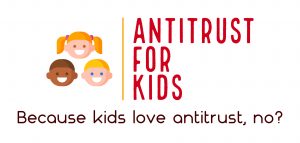Authors: Steven Cernak and Luis Blanquez
During the last week of June 2023, the Federal Trade Commission proposed making the most drastic changes to the Hart-Scott-Rodino form since the form was created in 1978. According to FTC Chair Lina M. Khan’s statement, joined by Commissioners Rebecca Kelly Slaughter and Alvaro M. Bedoya “This marks the first time in 45 years that the agencies have undertaken a top-to-bottom review of the form that businesses must fill out when pursuing an acquisition that must be notified in accordance with the HSR Act.”
As we have previously described, HSR is the program under which the parties to most large transactions must submit the form and certain documents to the US antitrust agencies prior to closing the deal. The HSR form has always been short but complicated, with decades of formal regulations and informal interpretations, even lore, behind each of its sections.
Much of that history will go by the wayside if the final changes are anything like this initial proposal. The form — along with the documents and data it requires — will more closely resemble the much more onerous premerger notification schemes in other jurisdictions and will significantly lengthen the time and increase the expense of future HSR Act filings. Unfortunately, the current proposal does not envision the higher thresholds or “short forms” for obviously benign transactions present in those other jurisdictions.
The FTC will be accepting comments on its current proposal until late August. It will consider those comments before issuing the final form and instructions, likely later this year. While the details of the new form might change in the coming months, most of the current proposals likely will survive. To begin to prepare for that new day, here are some of the highlights:
- Provision of details about transaction rationale and details surrounding investment vehicles or corporate relationships. This might include diagrams of a transaction’s structure, the timeline for the acquisition, and all related agreements between the parties at the time of the filing, among others;
- The disclosure of required foreign merger control filings becomes mandatory;
- Provision of information describing horizontal overlaps, and non-horizontal business relationships such as supply or licensing agreements;
- Provision of projected revenue streams, transactional analyses and internal documents describing market conditions, and structure of entities involved such as private equity investments. This means an expansion on the scope of 4(c) and (d) documents, including, for example, drafts (not just final versions) of responsive documents and other non-transaction related documents;
- Provision of details regarding previous acquisitions undertaken within the ten years prior to the acquisition filed, including information about all officers and board members, significant creditors and holders of non-voting securities, or minority shareholders (including now minority investors from companies controlled by the ultimate parent company), among many others;
- Disclosure of information that screens for labor market issues by classifying employees based on current Standard Occupational Classification system categories.
- Disclosure of subsidies from foreign entities of concern that Congress believes can distort the competitive process or otherwise change the business strategies of a subsidized firm in ways that undermine competition following an acquisition. Under the Merger Filing Fee Modernization Act of 2022, the agencies are required to collect information on subsidies received from certain foreign governments or entities that are strategic or economic threats to the United States.
Implementation of anything like these changes will move the HSR system even further from what Congress envisioned when it passed HSR in 1976. Then, the bill’s sponsors predicted that only the 150 largest deals each year or so would require a filing — over the last twelve months, nearly 2100 filings were made. Congress envisioned that even the “second requests” would require only documents and data that had already been “assembled and analyzed by [the parties]” — now, second requests usually take nearly a year to complete. These changes to the initial form and submission promise to add weeks to every filing, not just the problematic ones, as the parties assemble documents and data that they saw no need to analyze. Odd that the FTC sees as necessary such drastic changes to a notification program that its Introductory Guide has described as a “success” since at least 2009.
 The Antitrust Attorney Blog
The Antitrust Attorney Blog












